Bridging Cultures to Restore Hat Creek Wild Trout Area
California Trout and Lomakatsi Restoration Project held a ribbon-cutting ceremony on June 19, 2018 to celebrate the opening of a new pedestrian bridge over lower Hat Creek, one of California’s most important Wild Trout Areas, and commemorate the incredibly productive last three years of restoration work.
The ceremony marks a major milestone in the ongoing ecological restoration of lower Hat Creek. The new bridge symbolizes the work that CalTrout, Lomakatsi Restoration Project, and their project partners have done to bridge cultures and reduce the socio-economic divide in the region, as well as to support the robust native fish populations, healthy rivers, and thriving communities. It also allows anglers and hikers to access both sides of the creek without disrupting the ecological restoration work that has been done to improve conditions for wildlife and aquatic species.
“The Hat Creek project began around the legacy of our organization and fly fishing,” said Drew Braugh, Mt. Shasta/Klamath Regional Director of CalTrout, “but it has turned into so much more. This project provides conservation jobs for tribal members and training programs for young people interested in helping restore their ancestral tribal lands. These jobs are important for engaging the next generation in the long-term stewardship of Hat Creek. It’s also provided a significant socio-economic boost in the Burney area.”
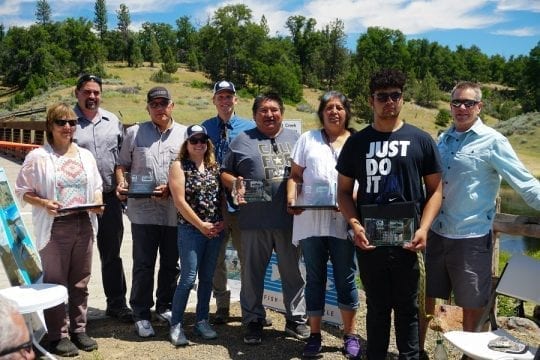
CalTrout and Lomakatsi presented Streamkeeper Awards to several tribal members for their dedication to protecting and restoring the wild trout waters of lower Hat Creek.
The lower Hat Creek restoration effort is the result of a partnership among several diverse stakeholders: state and federal agencies, the Illmawi Band, landowner Pacific Gas & Electric, and the Stewardship Council, which works to protect and enhance the beneficial public values and uses of watershed lands, and to improve the lives of young Californians through connections to the outdoors. Additional project partners include the US Fish and Wildlife Service, UC Davis Center for Watershed Sciences, Waterways Engineering, Inc., National Fish and Wildlife Foundation, and Orvis.
Marko Bey, Executive Director of Lomakatsi Restoration Project, noted, “It has been an honor to work with the tribal community and traditional leaders to create a program that brings Traditional Ecological Knowledge together with ecological restoration for the implementation of a cutting-edge habitat enhancement project.” Lomakatsi creates public benefits through restored ecosystems while engaging tribal community members in the stewardship of their ancestral lands. Thirty-five tribal members were employed during the Hat Creek project.
CalTrout and Illmawi Band Elder Cecilia Silvas, along with Key Project Delivery Partner, Lomakatsi, started planning this project work in 2012. They jointly raised funding with the partners and broke ground on the effort in 2015. In addition to restoring the 160-foot historic pedestrian bridge in Carbon Flats, accomplishments to date have included planting more than six acres of riparian corridor with 5,000 native plants, shrubs and trees; constructing/improving nearly three and half miles of recreational trails; and establishing a Tribal Youth Ecological Stewardship Training and Workforce Program through the Inter-Tribal Ecosystem Restoration Network. Indeed, much of the work completed was undertaken by tribal members and supported by Tribal Elders, Tribal Staff employed by Lomakatsi, and Tribal Community Members, who were contracted as Cultural Specialists/Guest Presenters and part of the live classroom experiential learning program.
“Prior to this project, the land around Hat Creek was being abused by people driving ATVs down to the creek, shooting guns, and leaving trash,” said Cecilia Silvas, Illmawi Band Elder of the Ajumawi-Atsuge Nation, whose people are indigenous and have inhabited this land base since time immemorial.
Belinda Brown, Tribal Partnerships Manager with Lomakatsi, said: “We are honored to be part of a successful project that took dedication and teamwork; and more importantly, restored and revitalized the culture, community and economy of elders, youth, and families and the traditional values of working on the land.”
Hat Creek was the first stream in the West to be managed exclusively for wild trout. It is also the birthplace of CalTrout: In 1972, CalTrout fought to restore the creek and won a wild trout designation for Hat Creek. By 1983, it was home to more than 5,000 fish per mile.
But in the late 1980s, tens of thousands of tons of sediment accumulated in the Wild Trout Area, most likely culminating from the 1915 volcanic eruption of Mt. Lassen or through years of bank erosion through grazing. This sediment had settled in sinkholes and lava tubes, and is thought to have been flushed out during the construction of the Baum Lake Dam in the 1980s, directly above the Wild Trout Area, making the creek shallower. During the same period, cattle grazing and invasive muskrat populations caused bank erosion.
Thanks to the restoration efforts being celebrated today, Hat Creek is getting back on track. The river is naturally flushing the sediment slug downstream. Aquatic vegetation, home to the macroinvertebrates that fish eat, is starting to regrow at the tail end of the sediment slug, and especially is thriving around the large woody debris structures, which CalTrout flew in via a Firehawk helicopter as part of the project. Fishing on the Carbon Flats is better than it has been in decades.
Big thanks to CalTrout’s field reporter Mike Wier for beautifully capturing the day’s events.


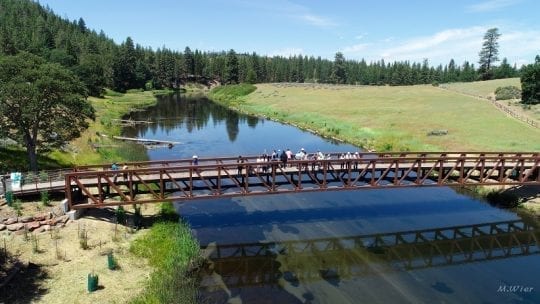
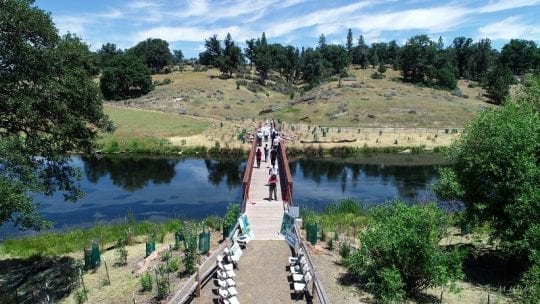
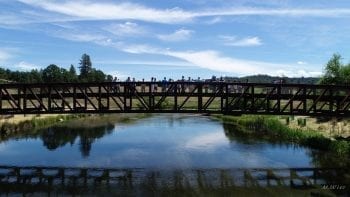
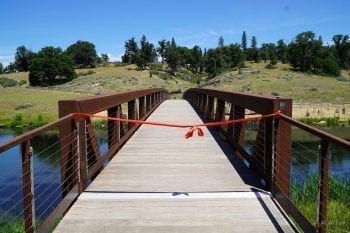
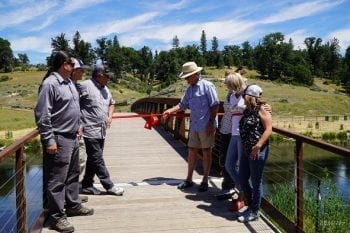
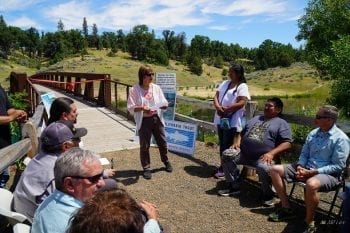
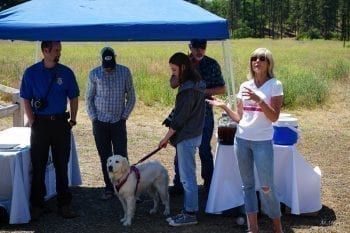
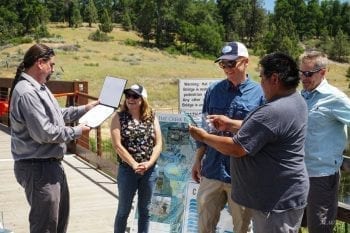
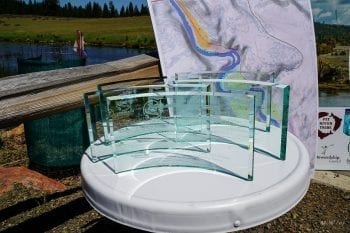
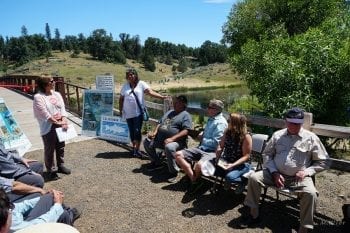
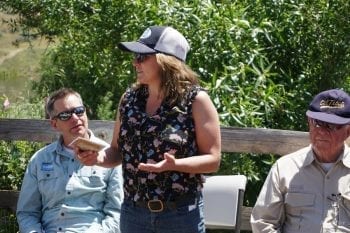
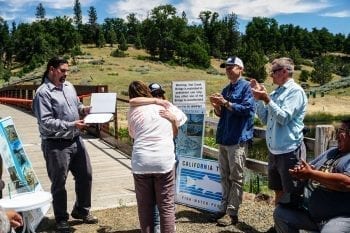
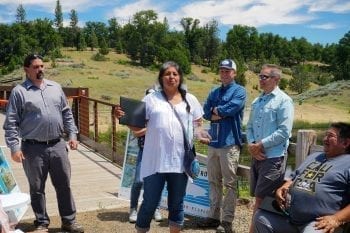
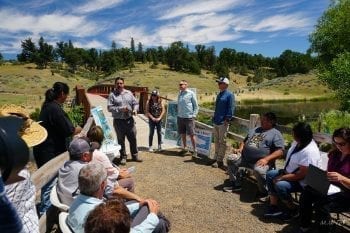
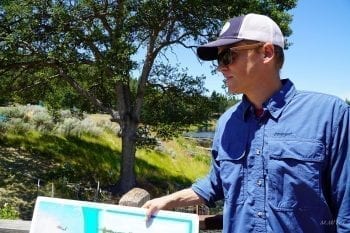
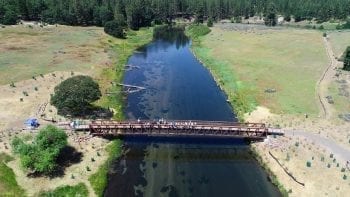
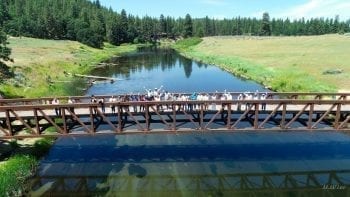
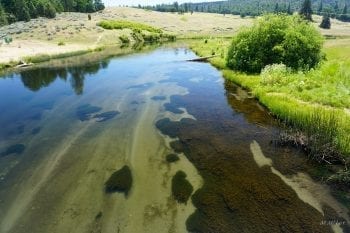



1 Comment
Drew, we talked last week at the Hat 2 parking lot, right after you came back with the politicians. As I mentioned, IMHO removing the barrier is a big mistake, the barrier has served its purpose of keeping the ‘trash’ fish out of Hat Creek. One thing I did not mention is that I think it would be a good idea to create designated ingress/egress points along the creek. As the fishing gets better, Hat will regain it’s reputation and I believe more people will come. Creating specific entry/exit points will become more important as more people come to fish. As it is, there are two default entry/exit points in the Power House Riffle (PHR) area that folks mostly use. But if you go down to the first bend, there are several and as the season progresses, there are more and more entry/exit points established ( I fished over 50 days on Hat this spring-fall, the trampling of the area at the first bend is very noticeable). Anyway, I think it would be a great project to create specific trails to the creek’s entry/exit points and it would help keep the bank stable. Hat has really gotten better the last few years, during my week-long visits, I will catch several fish over 16″, and the occasion fish over 20″. That hasn’t happened since the early ’90s. Bigger fish will bring more people, let’s help them be a little less destructive. All of us “Hat Creek Regulars” appreciate the work you and your crew have done, it’s really made a difference.